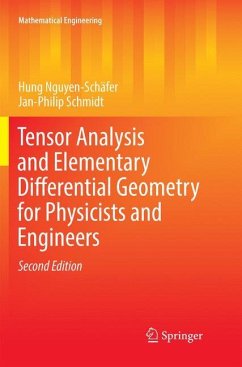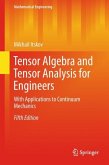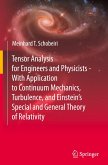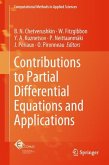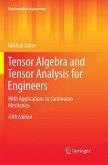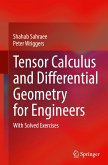This book presents tensors and differential geometry in a comprehensive and approachable manner, providing a bridge from the place where physics and engineering mathematics end, and the place where tensor analysis begins.
Among the topics examined are tensor analysis, elementary differential geometry of moving surfaces, and k-differential forms. The book includes numerous examples with solutions and concrete calculations, which guide readers through these complex topics step by step. Mindful of the practical needs of engineers and physicists, book favors simplicity over a more rigorous, formal approach. The book shows readers how to work with tensors and differential geometry and how to apply them to modeling the physical and engineering world.
The authors provide chapter-length treatment of topics at the intersection of advanced mathematics, and physics and engineering:
-General Basis and Bra-Ket Notation
-Tensor Analysis
-Elementary Differential Geometry
-Differential Forms
-Applications of Tensors and Differential Geometry
-Tensors and Bra-Ket Notation in Quantum Mechanics
The text reviews methods and applications in computational fluid dynamics; continuum mechanics; electrodynamics in special relativity; cosmology in the Minkowski four-dimensional space time; and relativistic and non-relativistic quantum mechanics.
Tensor Analysis and Elementary Differential Geometry for Physicists and Engineers benefits research scientists and practicing engineers in a variety of fields, who use tensor analysis and differential geometry in the context of applied physics, and electrical and mechanical engineering. It will also interest graduate students in applied physics and engineering.
Among the topics examined are tensor analysis, elementary differential geometry of moving surfaces, and k-differential forms. The book includes numerous examples with solutions and concrete calculations, which guide readers through these complex topics step by step. Mindful of the practical needs of engineers and physicists, book favors simplicity over a more rigorous, formal approach. The book shows readers how to work with tensors and differential geometry and how to apply them to modeling the physical and engineering world.
The authors provide chapter-length treatment of topics at the intersection of advanced mathematics, and physics and engineering:
-General Basis and Bra-Ket Notation
-Tensor Analysis
-Elementary Differential Geometry
-Differential Forms
-Applications of Tensors and Differential Geometry
-Tensors and Bra-Ket Notation in Quantum Mechanics
The text reviews methods and applications in computational fluid dynamics; continuum mechanics; electrodynamics in special relativity; cosmology in the Minkowski four-dimensional space time; and relativistic and non-relativistic quantum mechanics.
Tensor Analysis and Elementary Differential Geometry for Physicists and Engineers benefits research scientists and practicing engineers in a variety of fields, who use tensor analysis and differential geometry in the context of applied physics, and electrical and mechanical engineering. It will also interest graduate students in applied physics and engineering.
"The overall impression of the book is positive. Being addressed to physicists and engineers, it succeeds to impart a fairly sound knowledge of differential geometry and its instruments - the tensors - and show how this theory can be fruitfully applied." (Eleutherius Symeonidis, zbMATH 1369.53002, 2017)
"This book is an excellent systematic realization of tensor analysis for engineers and physicists at all levels, from undergraduate students to experts." (Hamid R. Noori, Computing Reviews, September, 2015)
"This book is an excellent systematic realization of tensor analysis for engineers and physicists at all levels, from undergraduate students to experts." (Hamid R. Noori, Computing Reviews, September, 2015)

